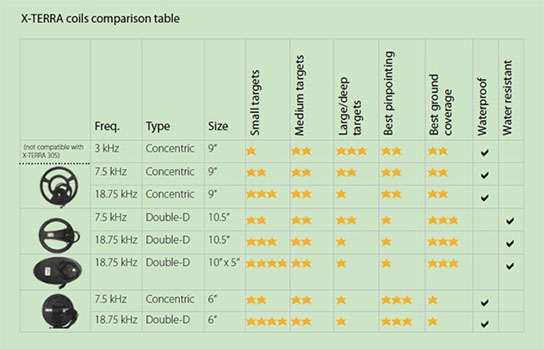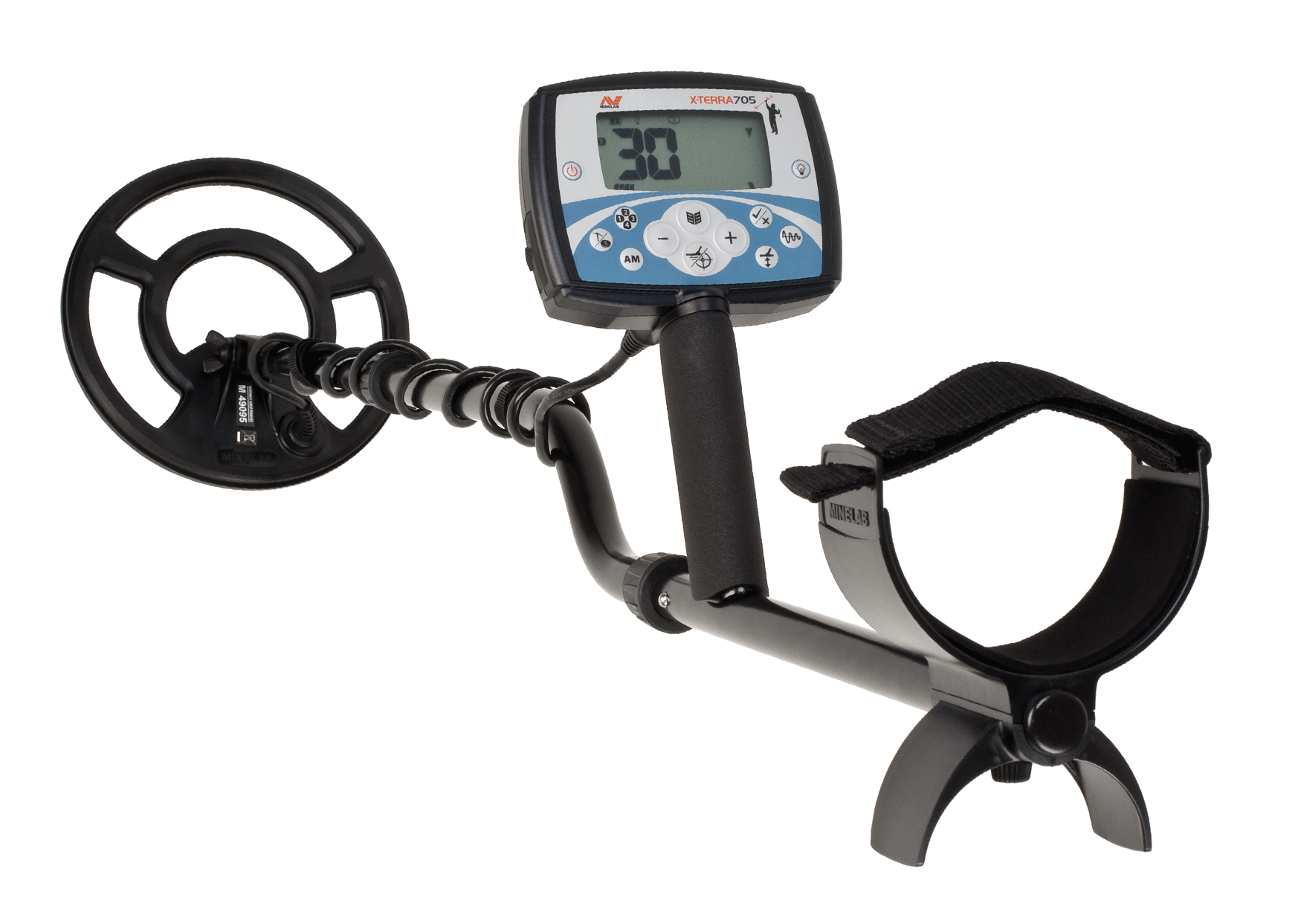So where will you be hunting? Do you need a waterproof coil, or is water resistant enough?
According to Minelab, waterproof means it is submersible to one meter, making it ideal for shallow water hunting.
The X-TERRA coils that are considered waterproof include the 6-inch concentric at 7.5 kHz, the 6-inch Double-D at 18.75 kHz, the 9-inch concentric at 3 kHz, the 9-inch concentric at 7.5 kHz and the 9-inch concentric at 18.75 kHz.
In addition to these Minelab coils, Coiltek markets a 15-inch All Terrain Double-D coil that is considered waterproof, by Coiltek’s standards. The remainder of Minelab’s X-TERRA coils, the 5 X 10 Elliptical Double-D at 18.75 kHz, the 10.5-inch Double-D at 7.5 kHz and the 10.5-inch Double-D at 18.75 kHz are classified as being “water-resistant”. This means they may be splashed, washed, used in drizzling rain, or moved through wet grass. But they must not be submersed under water.

So now we know that size of the coil can determine the X-TERRA’s detecting capabilities. We understand how Double-D coils can help neutralize the effects of magnetic mineralization and how to determine if we would benefit from using a Double-D coil at a particular hunt site. We know how each coil frequency responds to specific targets. And we know which coils are waterproof and which ones are water resistant.
But before we make a coil decision based on these technical merits, we need to consider one more thing... will we be hunting in surf, turf or stubble?
If you are going to be detecting in yards and parks, any of the coil’s designs (spoke style or solid bottom, round or elliptical), will glide over the ground quite easily. Same goes for beach hunting across the dry sand (If you’re going to be in or near the water, make sure your coil is waterproof).
The open design of the spoke style coils make them lighter weight and allow me to isolate exact locations when pinpointing. But in sites with tall weeds and stubble, I’ve found that they are more difficult to maneuver in and around the vegetation.
As I’ve said before, there are no magic wands in metal detecting. One’s person favorite coil will likely be different than the next.
Over the years I’ve found that a “favorite coil”, just as with a favorite detector, is based on what you find when you first start using it. It perpetuates itself... The more you use it, the more you’ll find with it. The more you find with it, the more you like it. And the more you like it, the more you use it. And on and on and on...
Regardless of the logic behind that, I hope you found the blog post interesting and the information useful. If it didn’t address a question you may have concerning X-TERRA coils, don’t hesitate to ask.
Randy Horton (Digger)
You'll never know for sure......unless you dig it!





















Comments
I you don`t mind I would like to throw you a few questions on my X-TERRA 705 Goldpack 10 x 5 DD. I Purchased a few months ago but just starting to understand how it works.
Beleive me I have done plenty of research and reading on how to operate it.
Can you explain why I get numbers 28 and 32 when I scan over a concrete slab picking up the mesh inside ? I thought the mesh being ferrous would give me lower numbers ?
Also I played with it in my front lawn and picked up something below that gave me a wide range of numbers can`t remember now but was getting something like -2,28,32,16,-6,42,38 etc all within a range of 250mm. I was stumped so I dug it up and found an offcut strip of metal from the colourbond roofing off my house only 2" deep and thats all that was there ?
I am also very keen on the 15" coiltek DD as second option to find some gold and detect deeper for coins and relics.
Cheers
The "bouncing" numbers of the colorbond roofing does not surprise me. If you've read the eBook, Understanding your X-TERRA, you are familiar with my "consistency theory". Briefly, it explains the importance of analyzing a target by looking for a consistency in location, audio response and TID. If you've not read the eBook,"Understanding your X-TERRA" I'd encourage you to do so. It is available here on this website, FREE of charge. One final comment, in both of the instances you mentioned above, you could have better identified the size and shape of the "targets" by using either Prospecting mode or Pinpoint Sizing. Best of luck in learning more about your X-TERRA.
Dowloaded the E book and will go through it.
Cheers